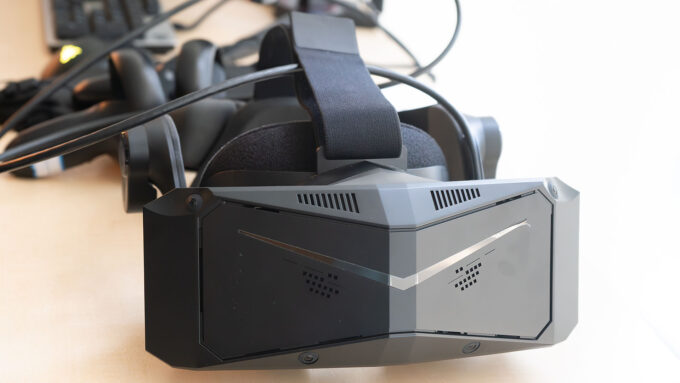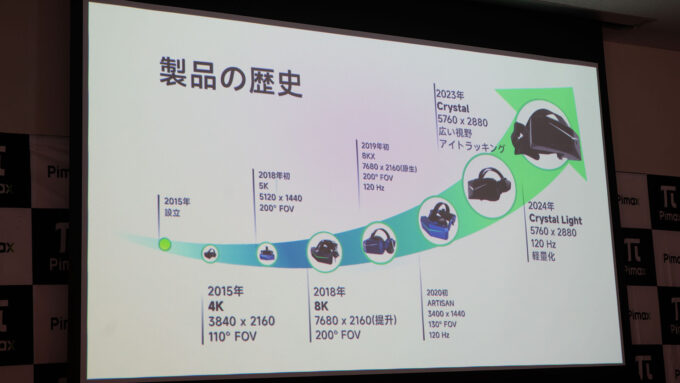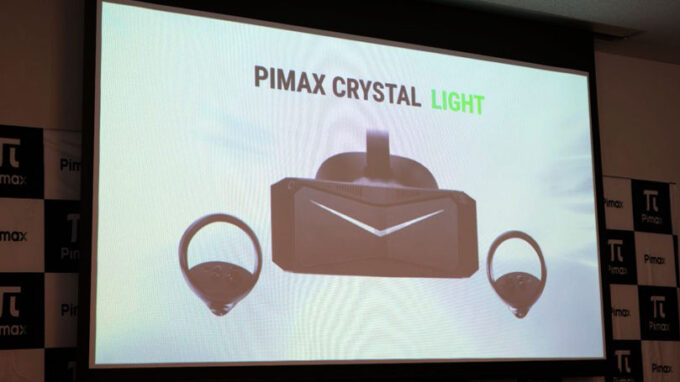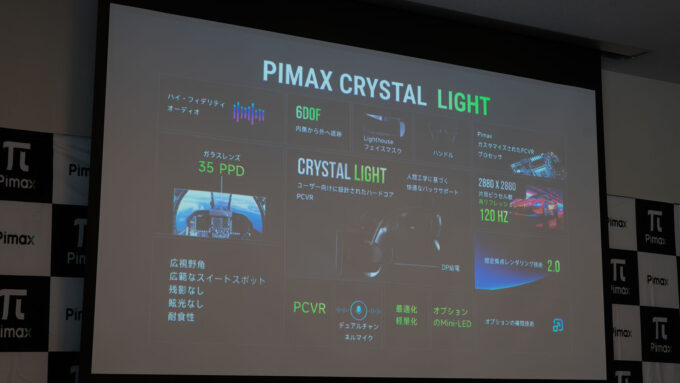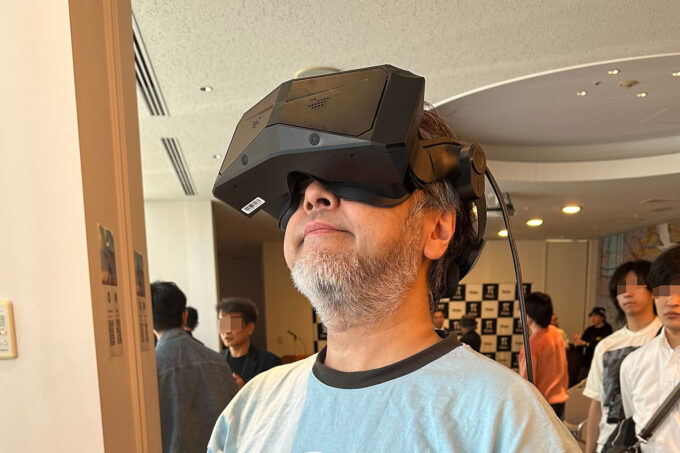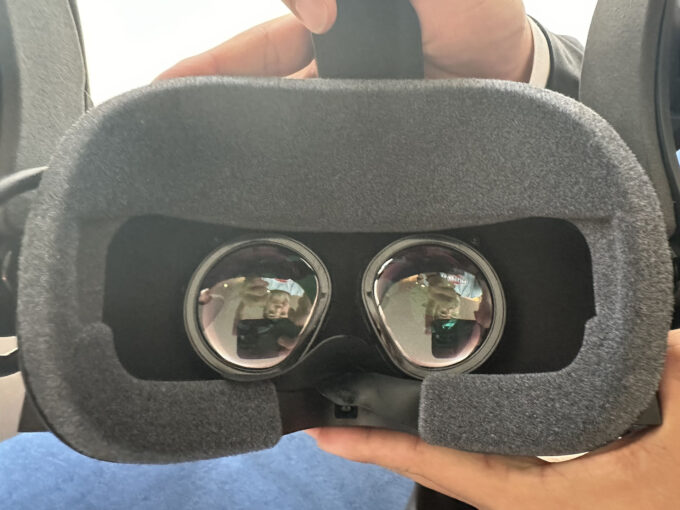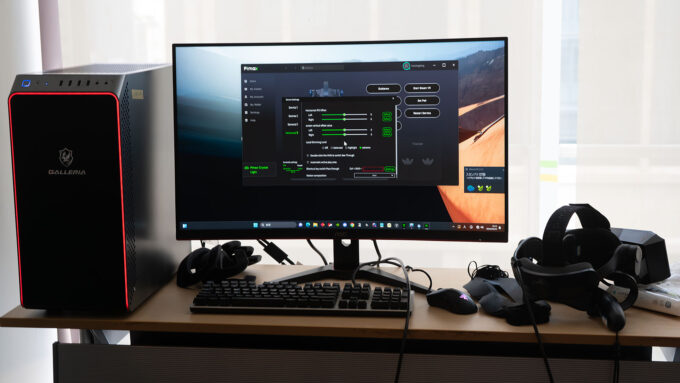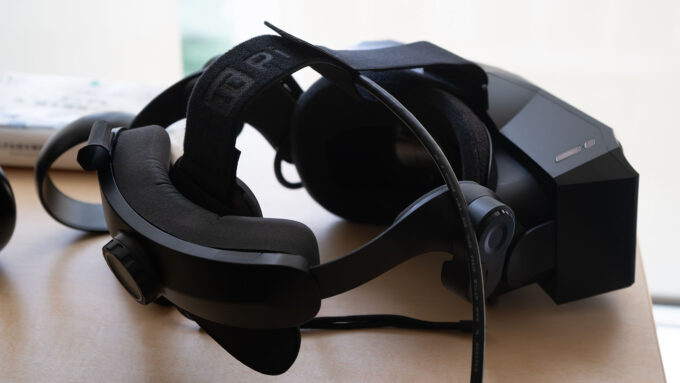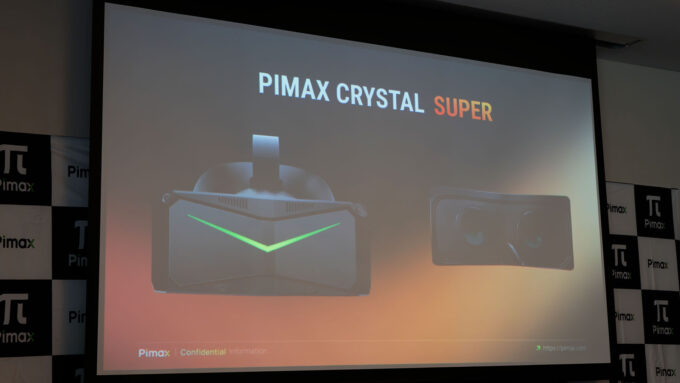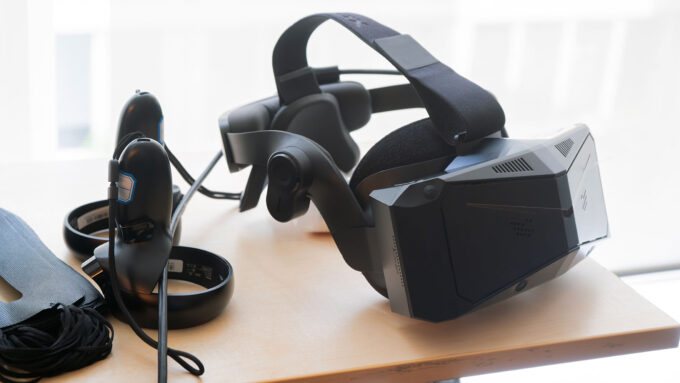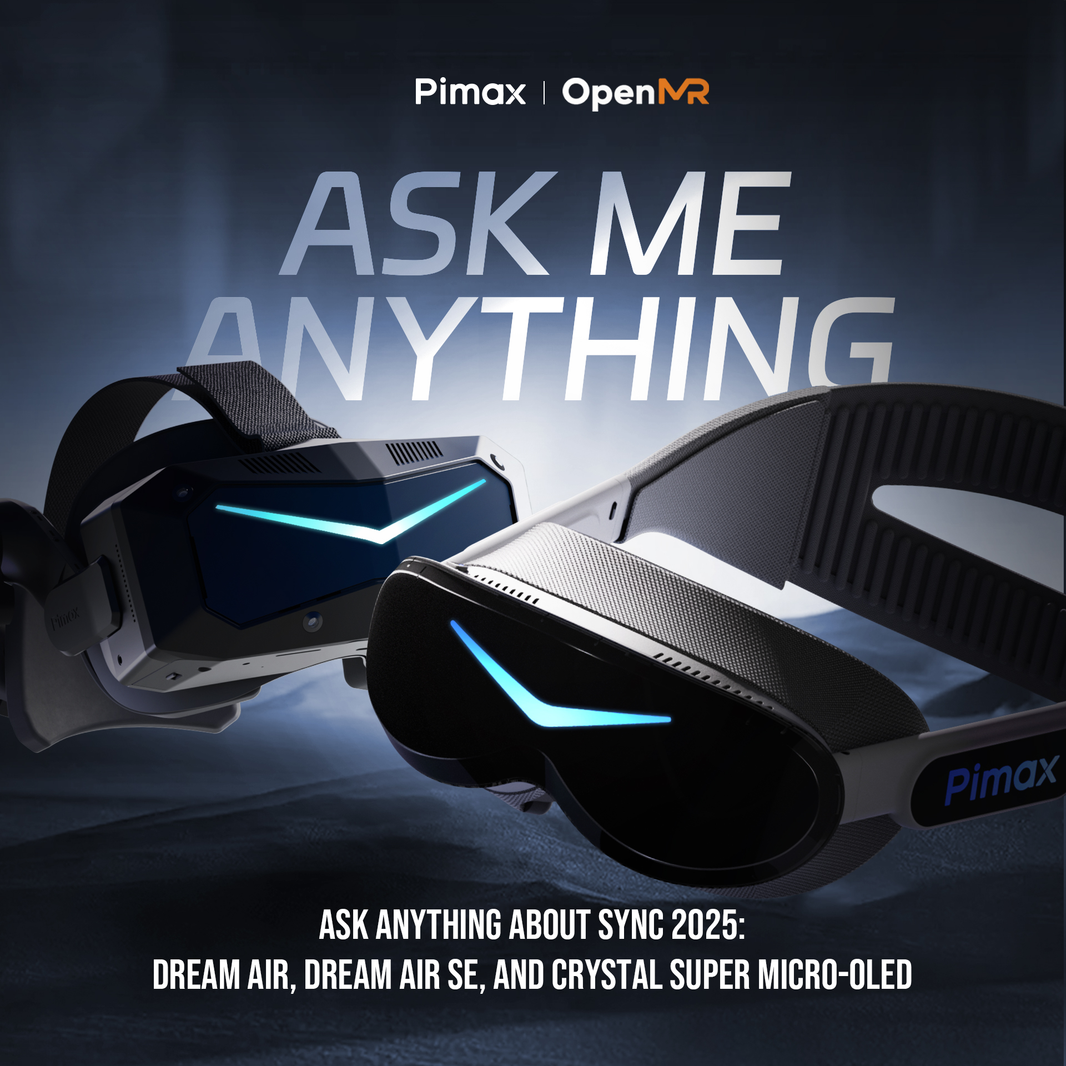Pimax developed a VR headset with 8K resolution (4K per eye) in 2018, before Apple Vision Pro, and announced a project for a 12K resolution VR headset in 2021. A trial session for their latest product, Pimax Crystal Light , was held on May 25th.
The event was held at the Fuji Soft Building Reception Hall in Akihabara, where XR content makers, media reporters, influencers, and XR headset users gathered to experience the Pimax Crystal Light's comfortable fit, wide field of view, and high-resolution images.
Pimax Crystal Light is a lightweight, wired PC VR device
At the latest model announcement event held prior to the demo session, the company began by explaining the history of Pimax. Founded in 2015, the Pimax 8K project, which was launched on Kickstarter in 2017, attracted a lot of attention and broke the Guinness World Record as the most successful VR crowdfunding project in history. Since then, the company has released updated versions of the Pimax 8K, including the Pimax 8K Plus and Pimax 8K X.
The Pimax Crystal Light, now available in Japan, is a limited-featured lightweight model of the Pimax Crystal, which was released in 2023. It boasts a maximum refresh rate of 120Hz and a QLED/MiniLED panel with a resolution of 2880 x 2880 pixels per eye, achieving 35 PPD (Pixels Per Degree). It also uses a highly transparent glass aspherical lens, enabling clear images with fixed viewpoint rendering.
MiniLED panels also feature local dimming (partial backlight activation), which improves the dynamic range of images compared to QLED panels. This reduces black floating, making dark scenes darker and bright scenes brighter, resulting in sharper images.
The biggest difference between the Pimax Crystal and the Pimax Crystal Light is that it is a wired PC VR device. And it's lighter. While the Pimax Crystal weighed 845g, the Pimax Crystal Light has been 310g lighter, weighing just 535g, by eliminating the SoC cooling fan, heat sink, DP extension table, IPD motor, battery, and power cable.
The steering wheel controller uses inside-out tracking, but an optional faceplate is available that supports Lighthouse tracking.
Enjoy beautiful VR images even with an RTX 4060-class GPU
When you actually try them out, you'll be surprised at how light they are. Although they have a large body, they are 250g lighter in the main body and 60g lighter in the back of the head compared to the Pimax Crystal, making for a good weight balance.
Although the viewing angle data has not been released at this time, it appears to have a wide viewing angle comparable to that of the Pimax Crystal. If I had to quantify it, I'd say the fov is around 120-140 degrees.
The visual resolution is also excellent. There are no screen door or god ray effects, and the quality is so high that it gives the illusion of a real 3D CG virtual space. I particularly feel that the effect of local dimming and the high quality of the lens really come into play. The clarity is just like when using a high-end lens on an SLR camera, and it's very satisfying.
I was also impressed by the fact that the PC connected to it when I tried it out was equipped with an RTX 4060 GPU, which gave me the sense that 6K VR can be achieved even without a high-end GPU.
The price is 112,999 yen for the model with a QLED panel, 143,999 yen for the model with a MiniLED panel that supports local dimming, and 143,999 yen for the model with a MiniLED panel, Lighthouse faceplate, and no controller. Sales in Japan are scheduled to begin at the end of June.
The high-end model "Pimax Crystal Super" is also coming to Japan
At the same time, the high-end model "Pimax Crystal Super" and the optional unit "Crystal Airlink" that makes the Pimax Crystal wireless were announced.
Like the Pimax Crystal Light, the Pimax Crystal Super is a PC VR-only device, but by using an interchangeable display panel and lens system, it achieves an extremely high PPD of 50-57. It also features an eye tracking system.
The QLED version is priced at 293,999 yen, the MicroOLED version at 325,999 yen, and a set of both units at 388,999 yen.
The Crystal Airlink is a 60GHz WiGig wireless technology unit, and unfortunately the Pimax Crystal Super is not compatible with the Pimax Crystal Light. The price is 48,999 yen.
Pimax plans to open five experience-based stores and 100 touch points in Japan. They also plan to localize their products, incorporating the opinions of Japanese VR users, who are at the forefront of the global market. While it has yet to be decided which retailer they will partner with, it's a welcome development that will allow people to experience the high-performance yet affordable Crystal series.
(TEXT by Musha Ryota )



